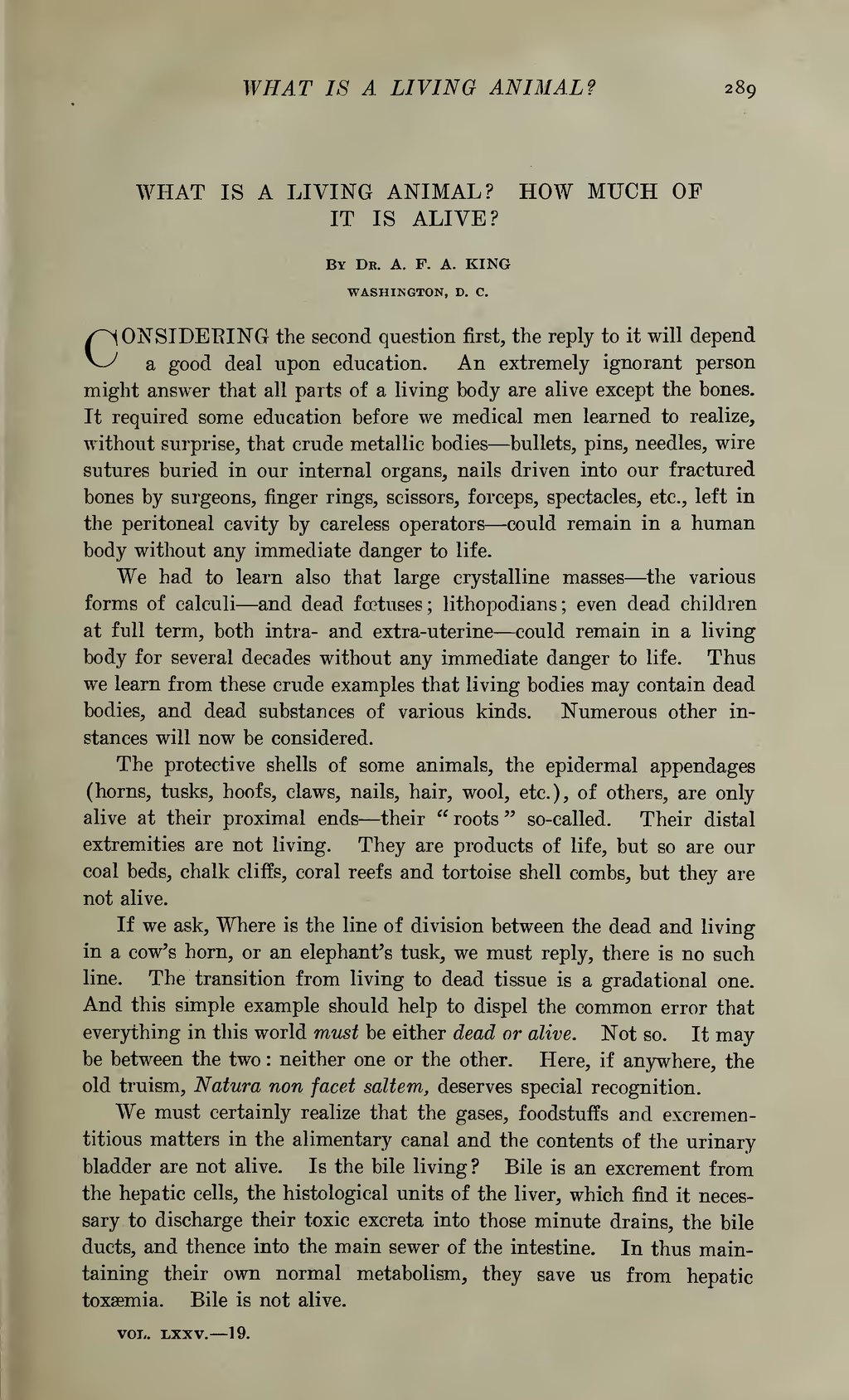| WHAT IS A LIVING ANIMAL? HOW MUCH OF IT IS ALIVE? |
By Dr. A. F. A. KING
WASHINGTON, D. C.
CONSIDERING the second question first, the reply to it will depend a good deal upon education. An extremely ignorant person might answer that all parts of a living body are alive except the bones. It required some education before we medical men learned to realize, without surprise, that crude metallic bodies—bullets, pins, needles, wire sutures buried in our internal organs, nails driven into our fractured bones by surgeons, finger rings, scissors, forceps, spectacles, etc., left in the peritoneal cavity by careless operators—could remain in a human body without any immediate danger to life.
We had to learn also that large crystalline masses—the various forms of calculi—and dead fœtuses; lithopodians; even dead children at full term, both intra-and extra-uterine—could remain in a living body for several decades without any immediate danger to life. Thus we learn from these crude examples that living bodies may contain dead bodies, and dead substances of various kinds. Numerous other instances will now be considered.
The protective shells of some animals, the epidermal appendages (horns, tusks, hoofs, claws, nails, hair, wool, etc.), of others, are only alive at their proximal ends—their "roots" so-called. Their distal extremities are not living. They are products of life, but so are our coal beds, chalk cliffs, coral reefs and tortoise shell combs, but they are not alive.
If we ask, Where is the line of division between the dead and living in a cow's horn, or an elephant's tusk, we must reply, there is no such line. The transition from living to dead tissue is a gradational one. And this simple example should help to dispel the common error that everything in this world must be either dead or alive. Not so. It may be between the two: neither one or the other. Here, if anywhere, the old truism, Natura non facet saltem, deserves special recognition.
We must certainly realize that the gases, foodstuffs and excrementitious matters in the alimentary canal and the contents of the urinary bladder are not alive. Is the bile living? Bile is an excrement from the hepatic cells, the histological units of the liver, which find it necessary to discharge their toxic excreta into those minute drains, the bile ducts, and thence into the main sewer of the intestine. In thus maintaining their own normal metabolism, they save us from hepatic toxæmia. Bile is not alive.

